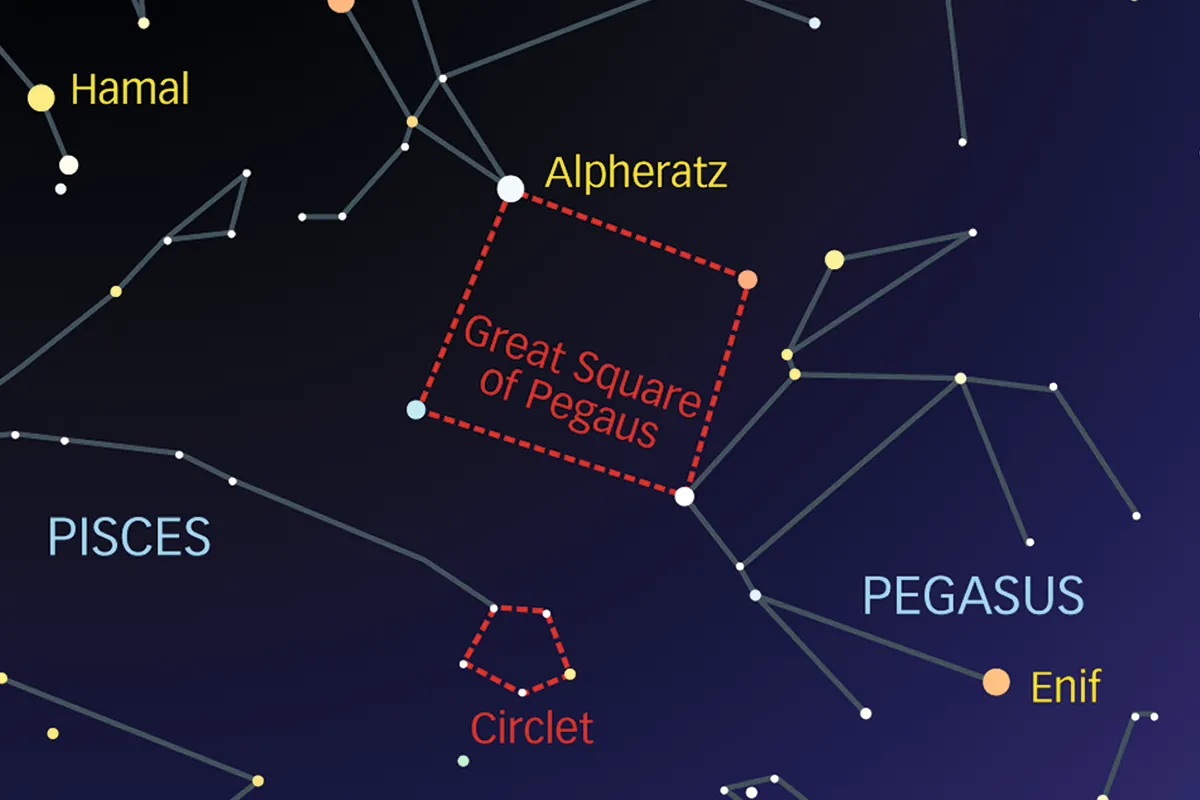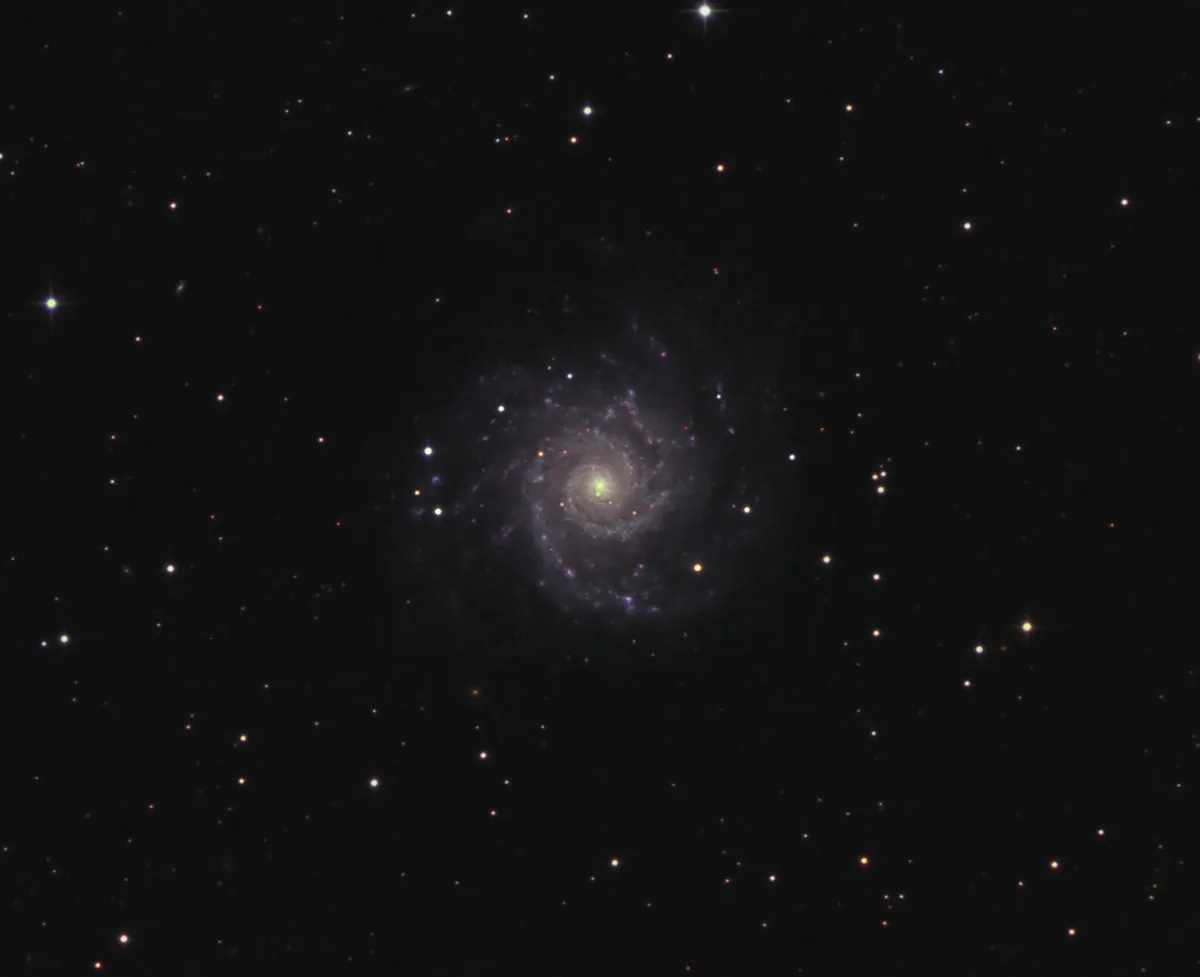A guide to the constellation Pisces
Pisces is a large faint constellation of autumn. It’s the 14th largest constellation by area but its brightest star is only mag. +3.6, which makes it harder to see from a location marred by light pollution.
The constellation Pisces represents two fish tied together by a cord, this slightly odd scenario being a less common thing to visualise and adding to the difficulty in imagining where Pisces is in the sky.
In this guide we'll look at how to find Pisces in the night sky, and what you can observe around it.
How to find Pisces in the sky

The trick to locating the constellation Pisces is to first use the large asterism known as the Great Square of Pegasus.
Once this has been located, look below the southern edge where you should be able to make out a ring of faint stars, the brightest of which is Gamma (γ) Piscium at mag. +3.7.
This is the Circlet asterism and despite its relative faintness, it does stand out fairly well.
This is probably due to the fact that the Circlet is 7 wide and 5 high, compact compared to the Great Square to its north.
The Circlet asterism

The Circlet represents one of the tied fish, the western fish to be exact.
The stars that form the ring range in brightness from Gamma at +3.7 to 7 Piscium at +5.0. In total, seven stars define the ring.
The star marking the Circlet’s eastern side is 19 Piscium also known as TX Piscium.
This is an interesting star that appears quite red through binoculars or a telescope.
It’s a carbon star, which shows a small variability on an irregular timescale between mag. +4.8 and +5.2.
The cord tying the fish together is attached to the Circlet at mag. +4.1 Iota (ι) Piscium, and usually drawn from this star to mag. +4.0 Omega (ω) Piscium.

From Omega, extend the line parallel with the southern edge of the Great Square of Pegasus for a similar length to that edge, to arrive at mag. +4.4 Delta (δ) and +4.3 Epsilon (ε) Piscium.
Keep the line going but angled down slightly to define the next section of the cord, passing through +5.2 Zeta (ζ), +4.8 Mu (μ), +4.4 Nu (ν) and, bending south a little further, +3.8 Alpha (α) Piscium, which is named Alrescha meaning ‘the cord’.
It should be apparent Pisces doesn’t obey the Bayer lettering order where the brightest star is alpha and subsequently dimmer ones follow the order of the Greek alphabet.

Alrescha, the cord
Alrescha is a close binary star with a component separation of 1.7 arcseconds.
Both are A-class stars and appear off-white and bluish when seen together, exhibiting magnitudes of +3.8 and +4.9, the dimmer component being the one that looks bluish.
Once you’ve reached Alrescha, head northwest to locate mag. +4.3 Omicron (ο) and on to mag. +3.6 Eta (η) Piscium.
The cord continues on this line for the same distance as Alpha to Eta, eventually arriving at the very ill-defined northern fish.
This is traditionally depicted as a triangle formed from mag. +4.7 Phi (φ), +5.4 68 and +4.5 Tau (τ) Piscium.
The faintness of these stars combined with others of similar brightness in the region, make identifying this fish quite a challenge.

To the naked eye, the region bounded by the cord towards the Great Square of Pegasus appears empty of stars.
Despite its size, no part of Pisces clips the Milky Way. Hence, there aren’t any local deep-sky objects to view.
Instead, this is a window to fine double stars and galaxies outside our own, with the brightest being M74, a face-on spiral which sits 1.3° to the east to Eta Piscium.

